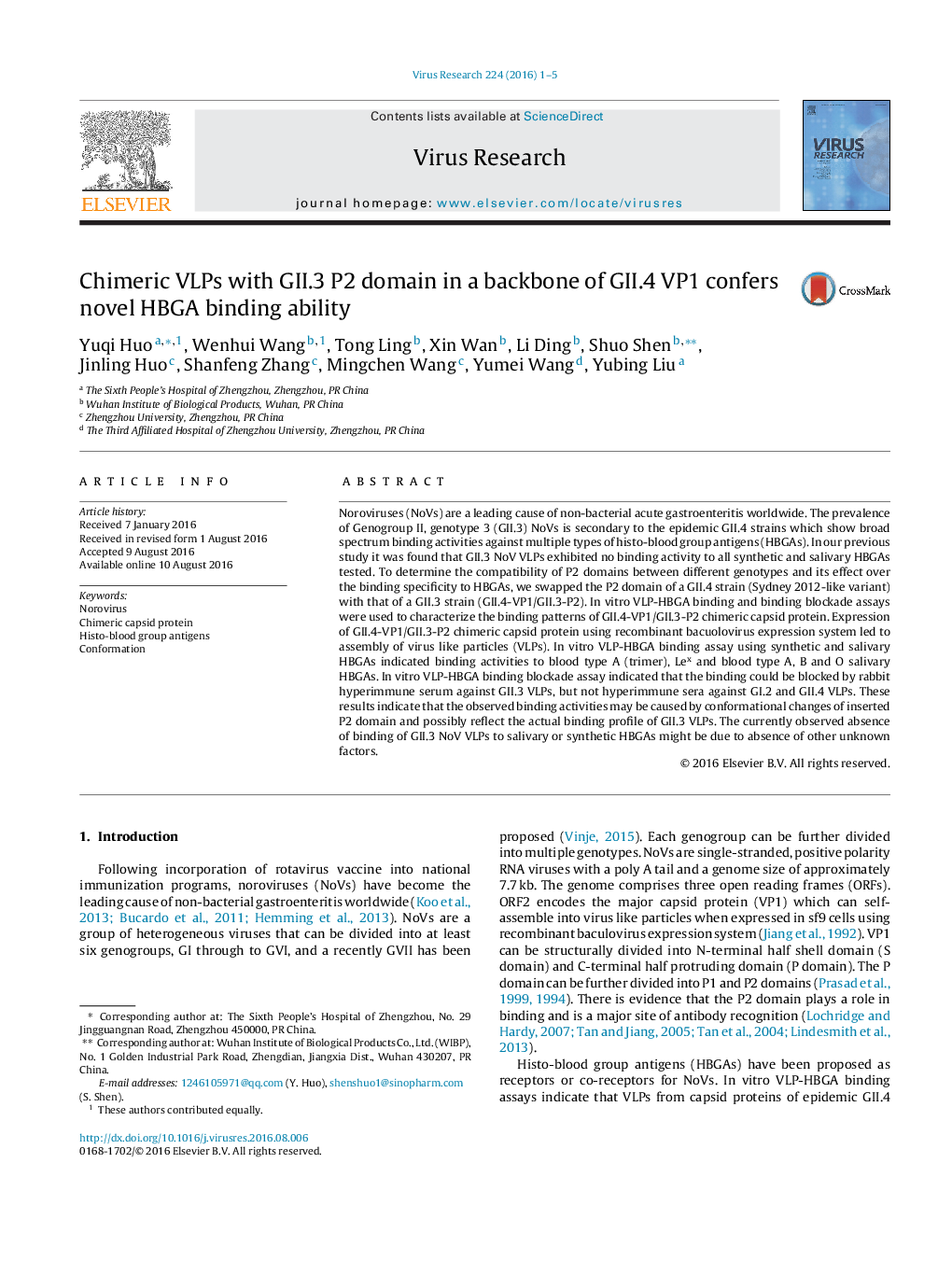| Article ID | Journal | Published Year | Pages | File Type |
|---|---|---|---|---|
| 3427833 | Virus Research | 2016 | 5 Pages |
•The expression of chimeric capsid protein with GII.3 P2 domain in a GII.4 VP1 backbone (GII.4-VP1/GII.3-P2) leads to assembly of VLPs.•The expressed GII.4-VP1/GII.3-P2 capsid protein assembled VLPs exhibit novel HBGA binding abilities.•The binding of the assembled VLPs to HBGAs can be blocked by hyperimmune serum against GII.3 VLPs, but not those of GI.2 and GII.4 VLPs.•The binding of GII.3 VLPs to HBGAs may require the presence of other unknown factors.
Noroviruses (NoVs) are a leading cause of non-bacterial acute gastroenteritis worldwide. The prevalence of Genogroup II, genotype 3 (GII.3) NoVs is secondary to the epidemic GII.4 strains which show broad spectrum binding activities against multiple types of histo-blood group antigens (HBGAs). In our previous study it was found that GII.3 NoV VLPs exhibited no binding activity to all synthetic and salivary HBGAs tested. To determine the compatibility of P2 domains between different genotypes and its effect over the binding specificity to HBGAs, we swapped the P2 domain of a GII.4 strain (Sydney 2012-like variant) with that of a GII.3 strain (GII.4-VP1/GII.3-P2). In vitro VLP-HBGA binding and binding blockade assays were used to characterize the binding patterns of GII.4-VP1/GII.3-P2 chimeric capsid protein. Expression of GII.4-VP1/GII.3-P2 chimeric capsid protein using recombinant bacuolovirus expression system led to assembly of virus like particles (VLPs). In vitro VLP-HBGA binding assay using synthetic and salivary HBGAs indicated binding activities to blood type A (trimer), Lex and blood type A, B and O salivary HBGAs. In vitro VLP-HBGA binding blockade assay indicated that the binding could be blocked by rabbit hyperimmune serum against GII.3 VLPs, but not hyperimmune sera against GI.2 and GII.4 VLPs. These results indicate that the observed binding activities may be caused by conformational changes of inserted P2 domain and possibly reflect the actual binding profile of GII.3 VLPs. The currently observed absence of binding of GII.3 NoV VLPs to salivary or synthetic HBGAs might be due to absence of other unknown factors.
